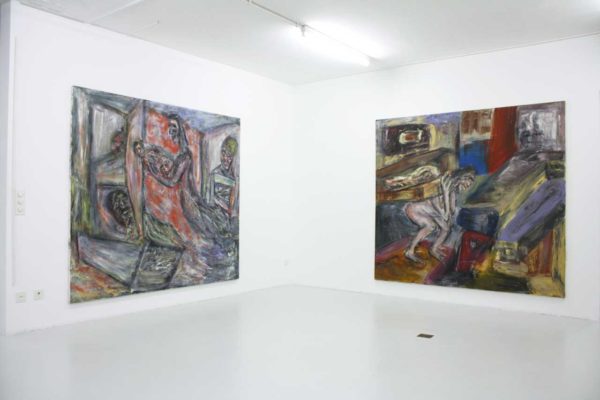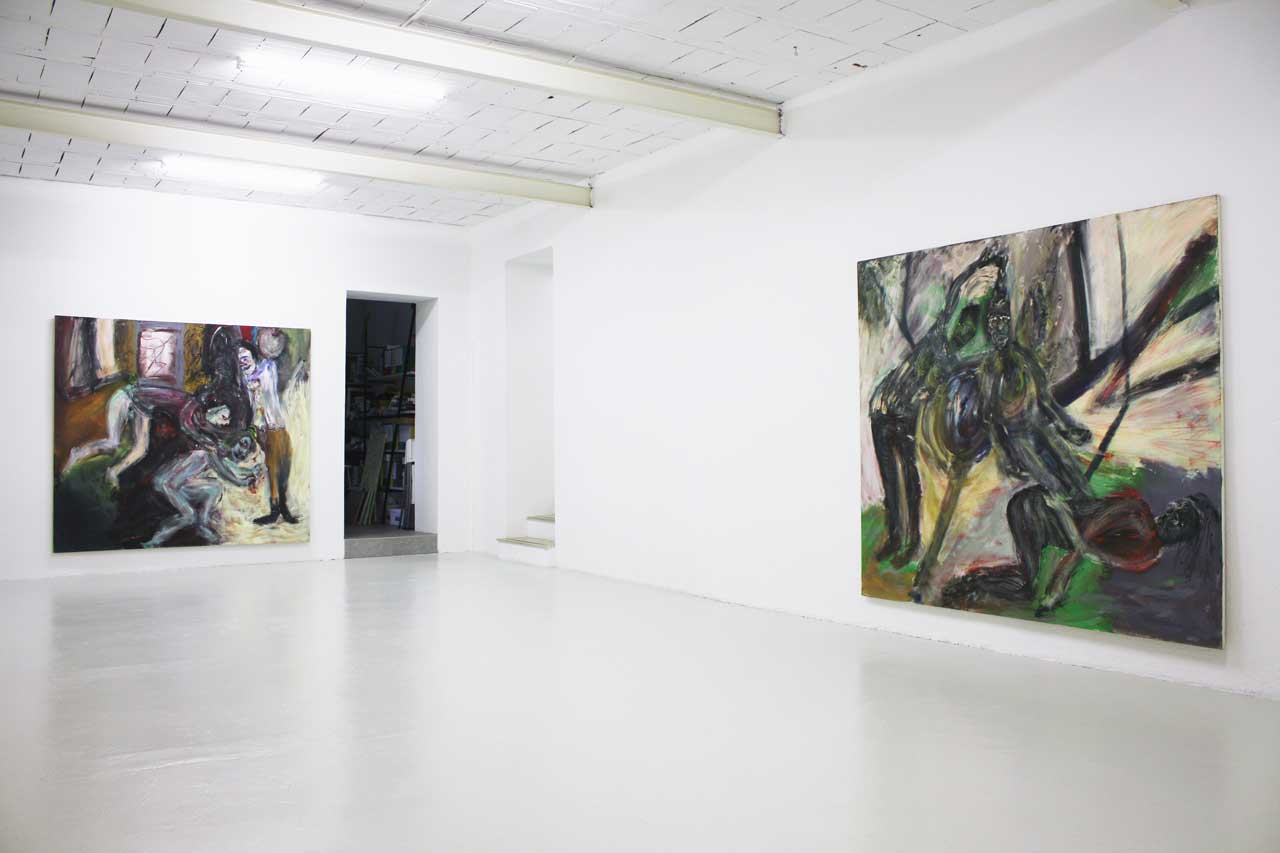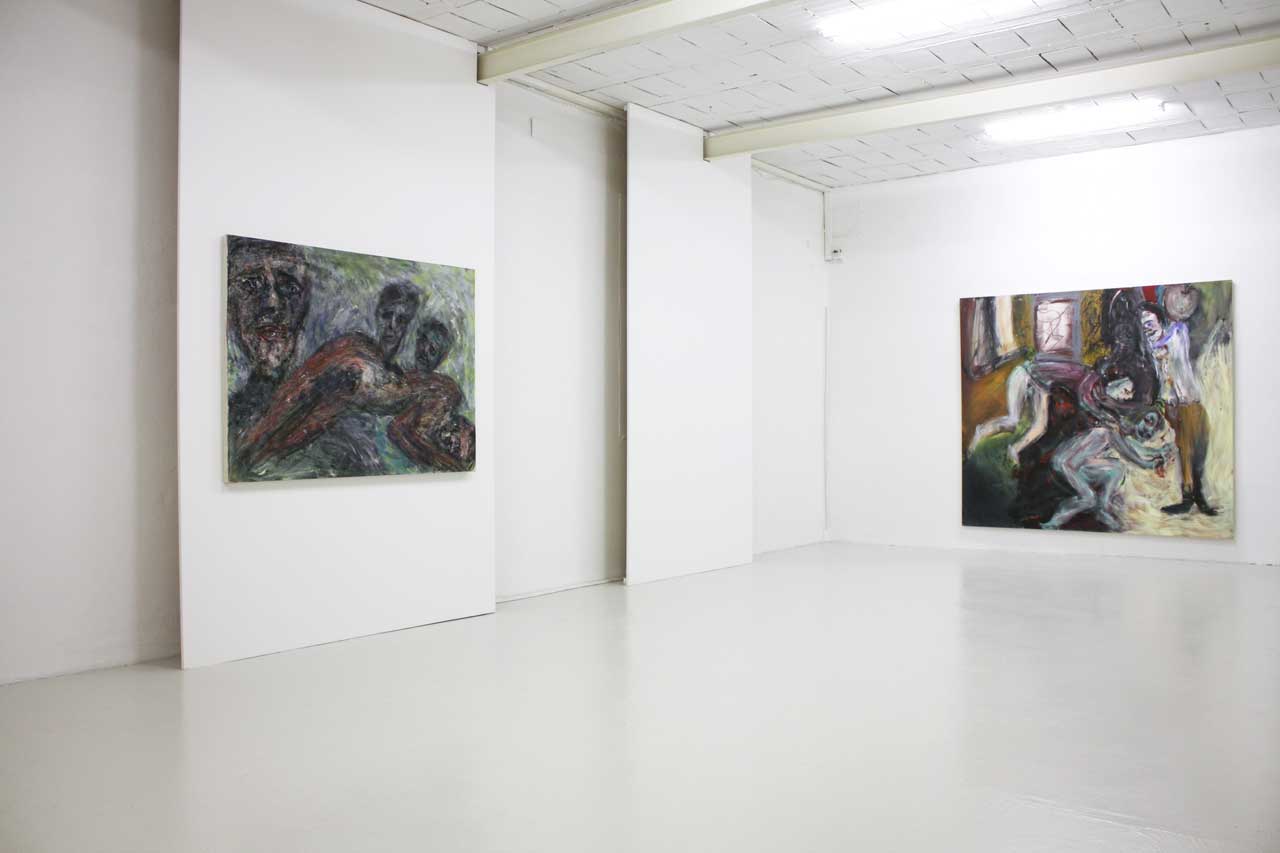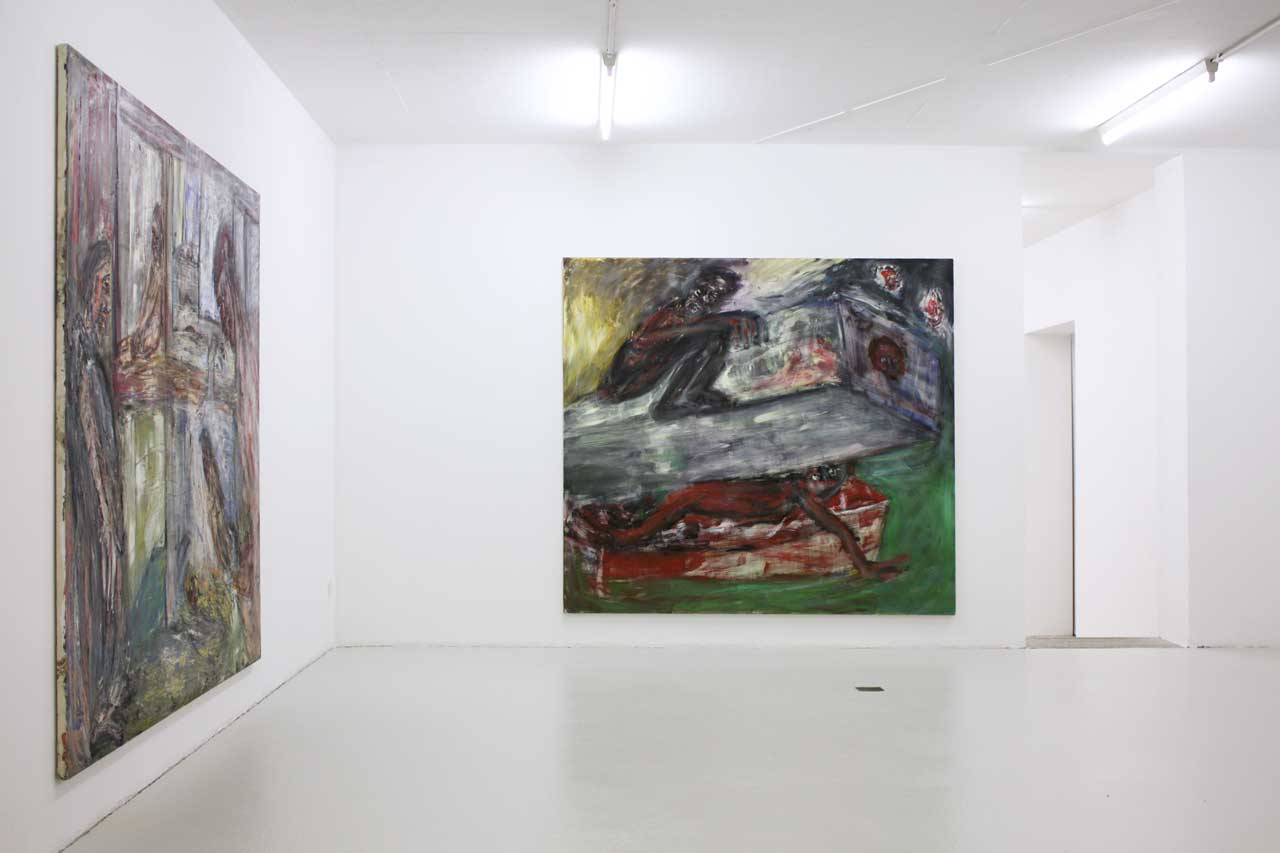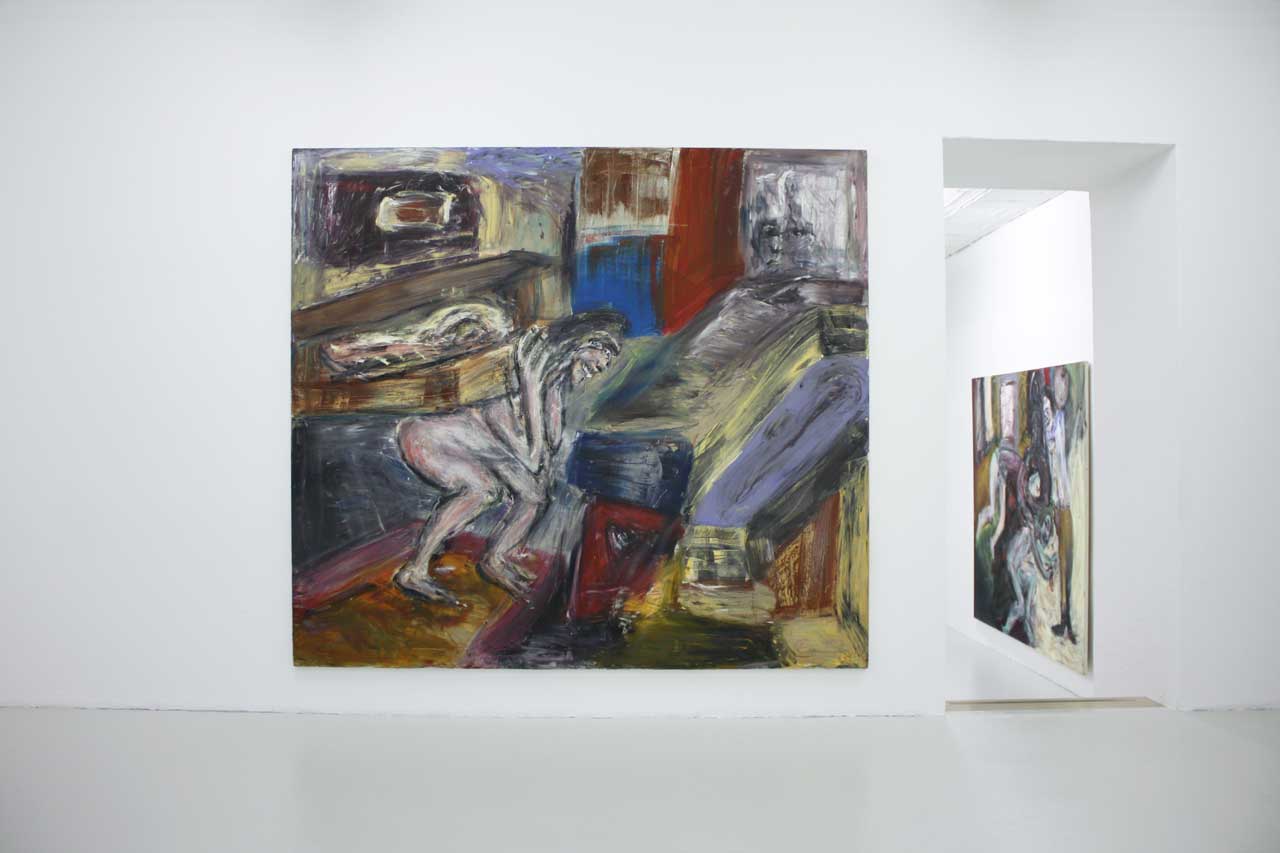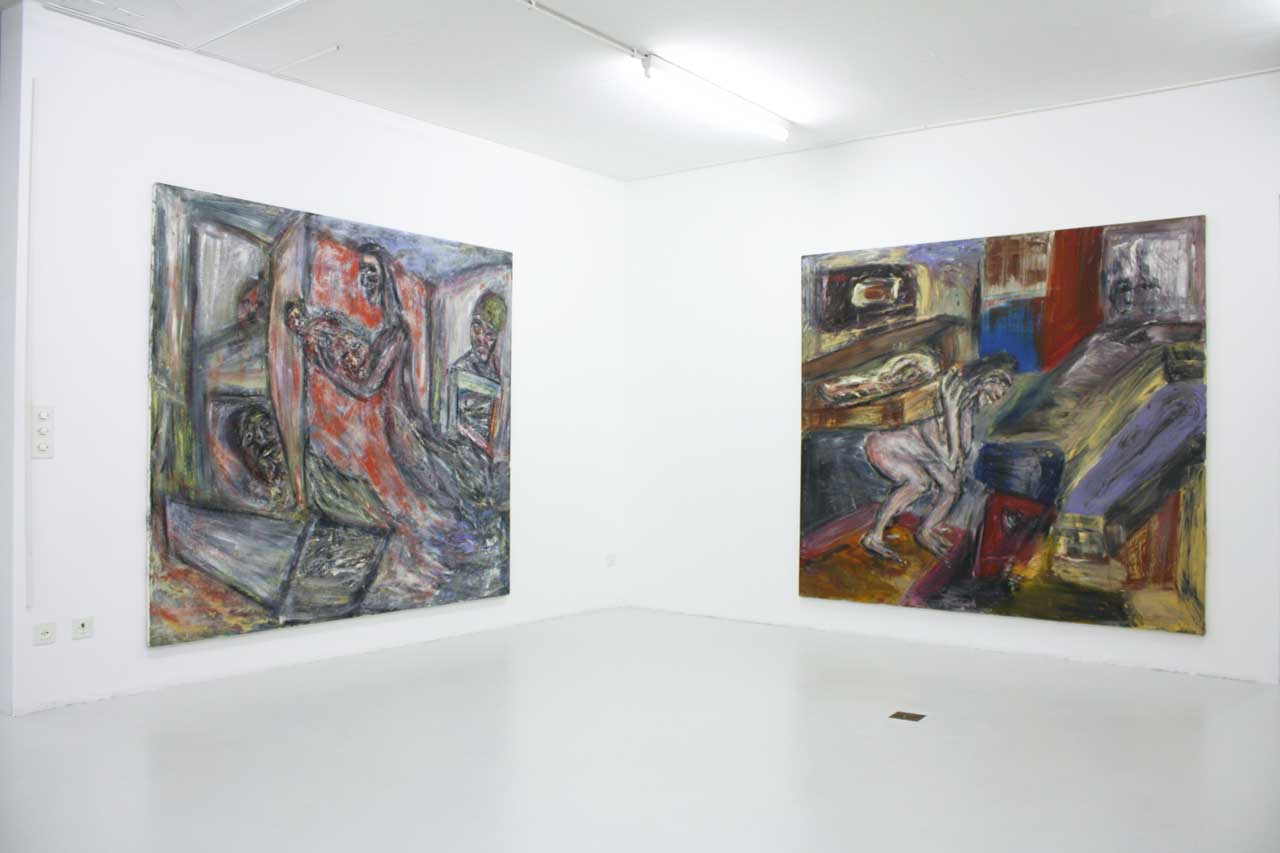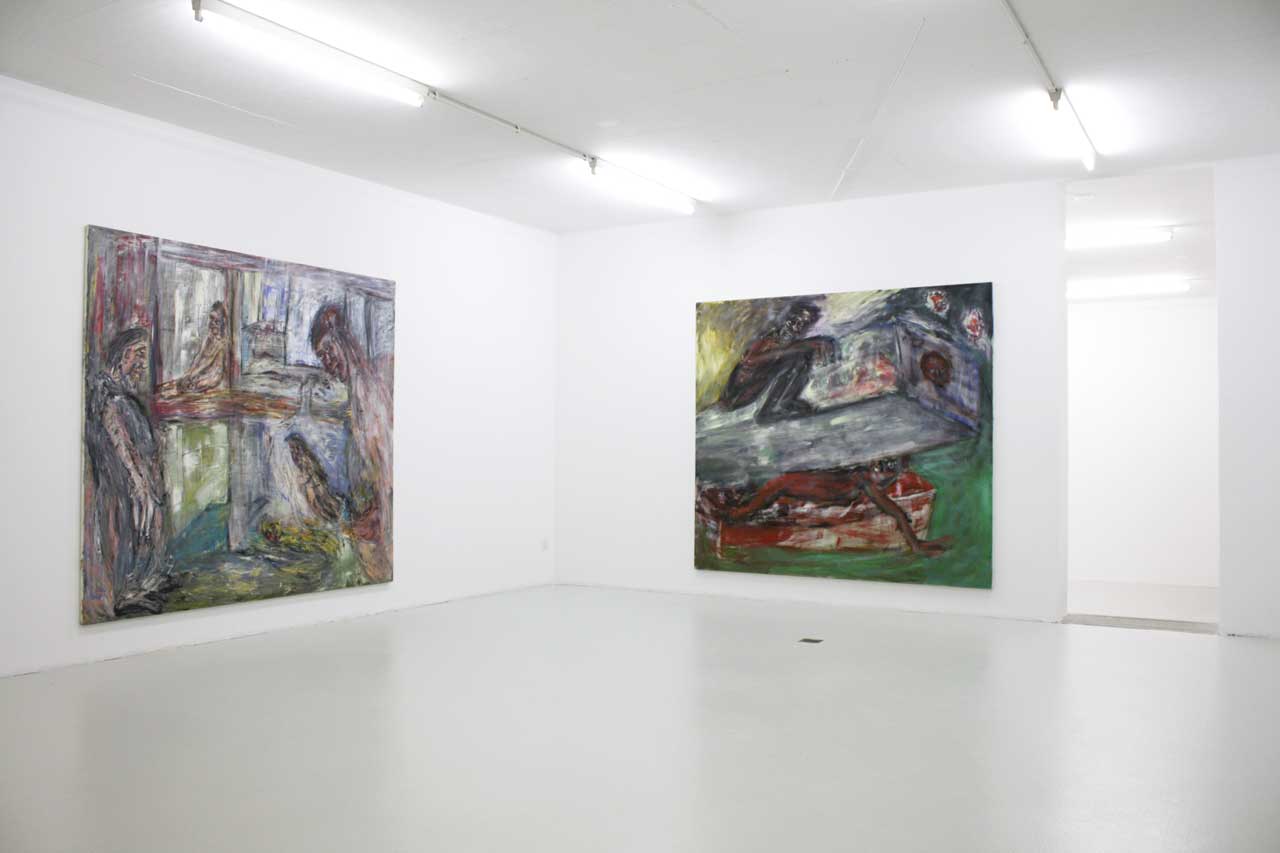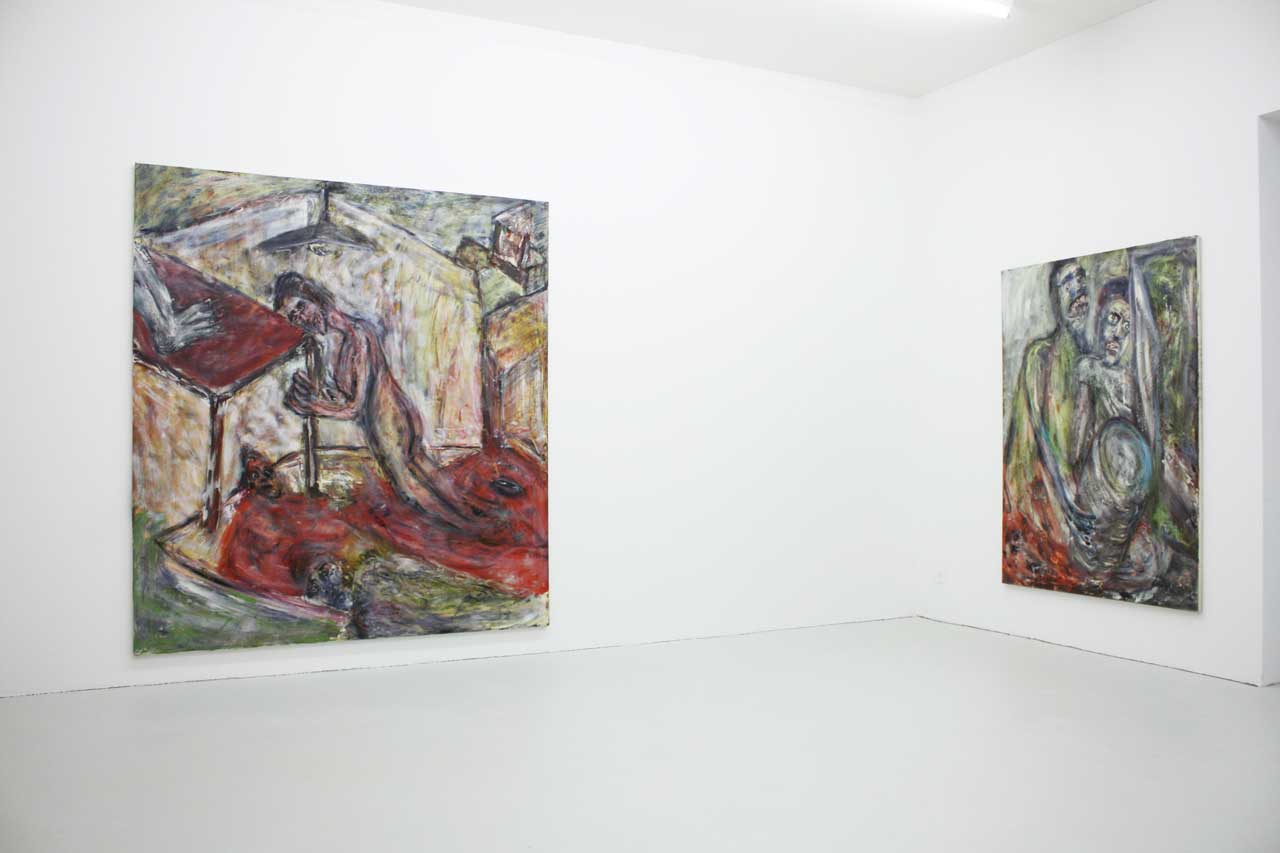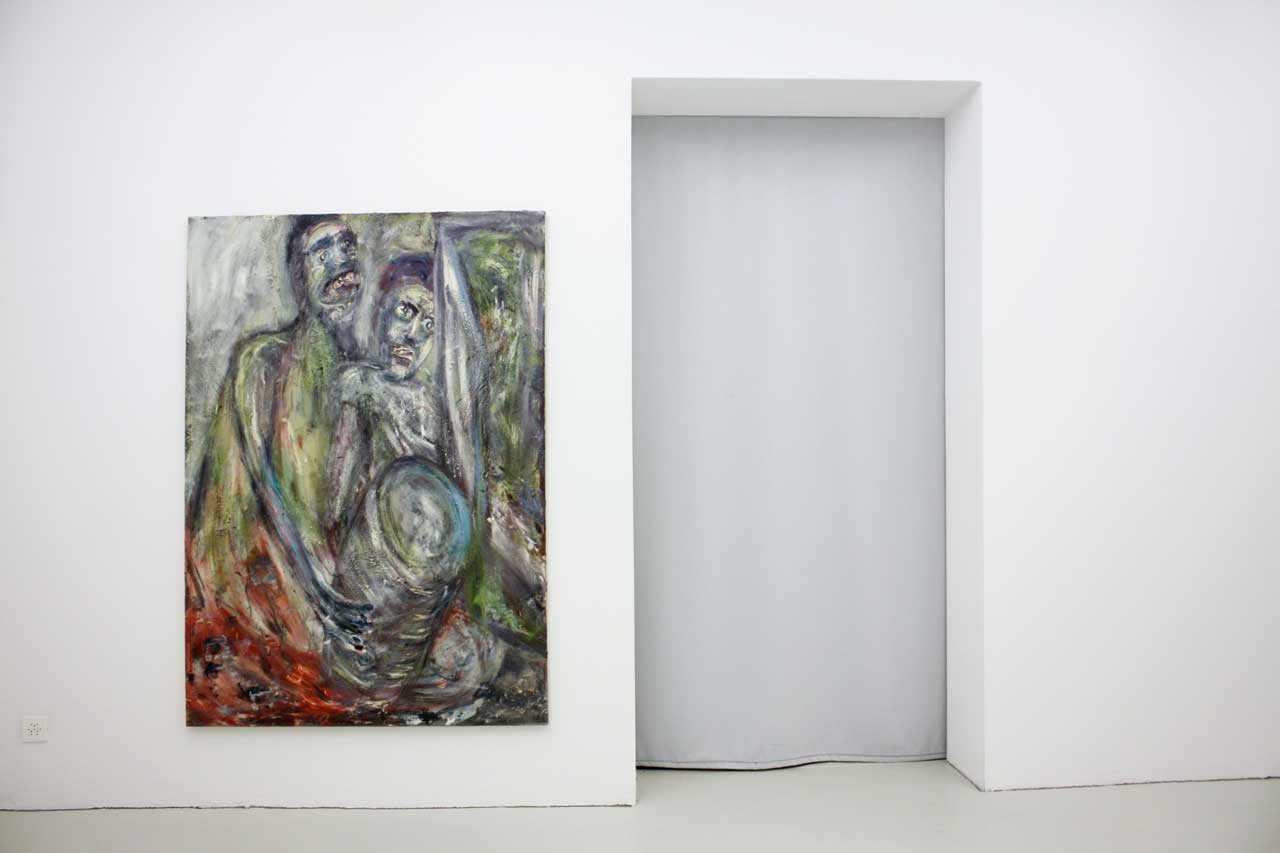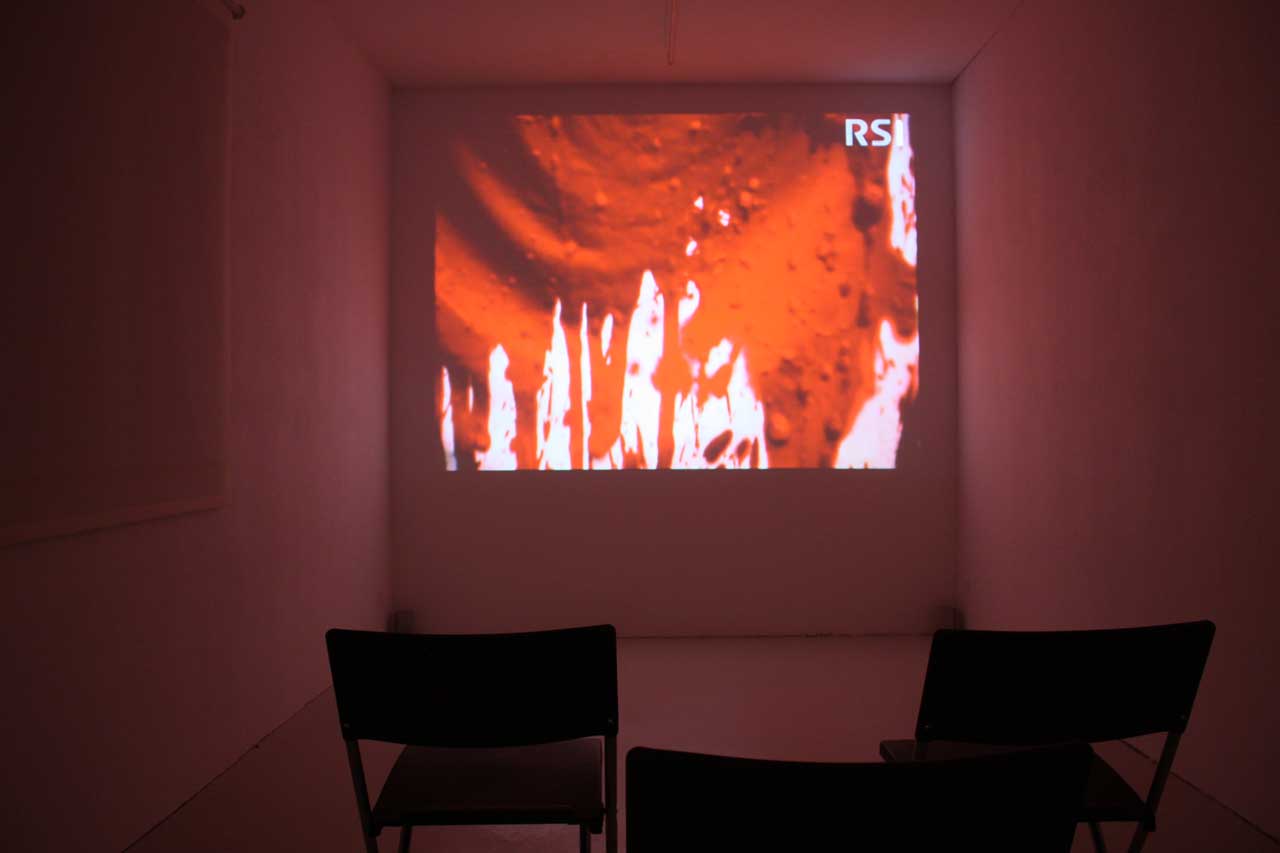Metamorphosis and the Archetype expressed
Martin Disler
26 April – 6 July 2014
On 24 September 1994, the official opening of MACT/CACT Contemporary Art in Canton Ticino coincided with the first personal show held by Martin Disler (1949-1996) in Ticino, curated by Mario Casanova. The exhibition featured mural paintings housed in our own premises and a series of bronze sculptures entitled Häutung und Tanz (Skinning and Dance, 1990-1991), in the appreciable setting designed by the architect Aurelio Galfetti in Castelgrande.
This exhibition marked the début of a permanent presence in Ticino for a different approach to contemporary art, capable of connecting in particular to the rest of Switzerland and indeed the rest of the world.
Twenty years after that milestone event, it was almost incumbent on us to organise another personal show in close partnership with the Martin Disler Estate: not so much a commercially-slanted retrospective as an exhibition that reopens the discussion about the work of this artist whose death was so untimely.
Martin Disler, whose career spanned the period from the late seventies to the mid-nineties, constituted a voice from Switzerland on the international art scene, a vital presence when it came to reviving painting styles based on an analytical-expressionist matrix. Working at the same time as the Italian phenomenon of the Transavanguardia and Germany’s Neue Wilden, Martin Disler was always one of the most eclectic, yet original, personalities on the scene, not so much because of his style, which was reminiscent of the CO.BR.A movement and the whole Brut tradition, as for his ability to combine the finished language of painting with the endless depths of Nordic culture and his personal existential experience. Hence Disler’s need to experiment and to question the forms of painting repeatedly, along with other issues, such as writing.
Self-taught, Disler based his learning on his experience with life, which was rooted in the obscure psychological consequences of a century, the twentieth, that had been devastated by political ideologies, by two world wars, by psychoanalysis and by the ruthless dictatorship of money. As a result, he prioritised the human being and all his contradictions in his studies. Disler analysed man from a great many standpoints – historical, anthropological and analytical – verging on a few intense issues, balanced on a knife-edge between the refined culture of sentiments and a society based on passions, between love and war, between man’s essence, his survival and his vanities. Rather like in a case of automatic writing, Disler’s painting follows his thinking and his total involvement; it is totalitarian in the means of his strong and in some ways bulky presence: man, woman, Eros and Thanatos, plus the third one, when three is a crowd, in this case representing infinity and instability of affections and existence.
On this layering of psychological perceptions, where the body can only be a mean emanation and at the same time a scion, Martin Disler drew and painted all his troubled existence, something of a prison among archetypes, from which he was trying to escape, the better to find a free vision going “beyond the possible”. His bodies, poised in a fragile equilibrium between human sentiment and animal torment, are psycho-geographies, magmatic morphologies that verge on becoming carnal symbols, yet unisexual in their fusion, a fusion both reciprocal and with the world: something of a revisitation of the aesthetics of the three dimensions.
This exhibition focuses exclusively on large-format paintings executed in 1994 and 1995 – so after Disler’s first exhibition in Bellinzona – and two works dated 1992, placed in a narrative in which the dramatic impact of their scale and the existential issues dear to the artist’s heart trace something of a Via Dolorosa of the human condition and its inexorable irreversibility.
One documentary film will also be screened during the exhibition for didactic purposes.
Mario Casanova, 2014 [translation Pete Kercher]
Ph. Pier Giorgio De Pinto © PRO LITTERIS Zürich.
Where
MACT/CACT
Museo e Centro d’Arte Contemporanea Ticino
Via Tamaro 3, Bellinzona.
Opening hours
Friday, Saturday, Sunday
2 p.m. – 6 p.m.

